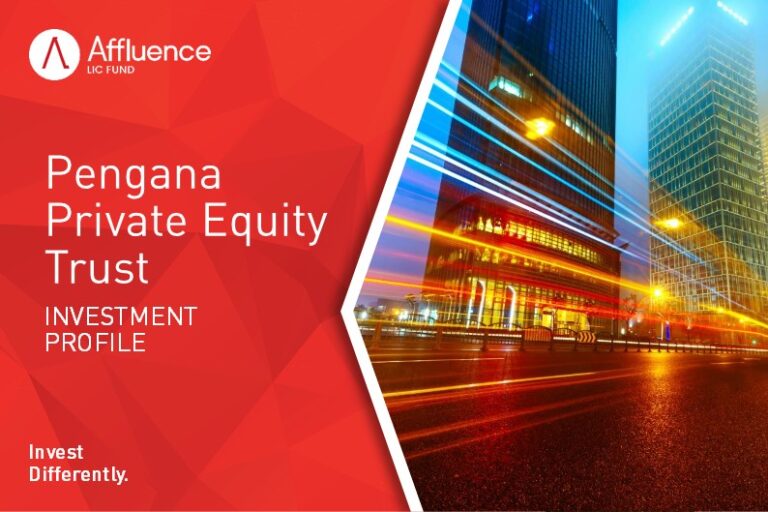Recently, Daryl Wilson spoke with Alan Kohler of the Constant Investor about our funds, how we go about picking the best managers and the huge gap in pricing right now between value and growth stocks.
You can listen by clicking below, or read on for a full transcript.
This interview first appeared on The Constant Investor and has been republished with permission.
Interview Transcript
I’m joined now by Daryl Wilson, who’s the Founder, CEO and Portfolio Manager of Affluence Funds Management, and I’m responding to a subscriber question who wanted to know about them and here he is. Daryl, we’re talking to you because one of our subscribers was interested in your funds, liked the look of you and so we said we’d talk to you and here we go. You’ve got three funds I think but only one of them is open at the moment, is that right, for new investors?
That’s correct, yeah. We have what we call our main fund, our Affluence Investment Fund, and it’s open to everybody with a minimum of $20,000 and that’s really where the business started, that was the core of the business.
When did you start that?
We started that back in late 2014, so it’s been going about three and a half years but actually the germ of that idea started a long time before that. Basically, what we’re doing there in that fund is we’re trying to bring together like a best of breed, a best of all of the fund managers we can find in Australia and across all different asset classes and all different investment strategies.
We sat back and said, ‘How do we want to invest our own money?’ And we run it almost like a bit of a – if you think of how the very rich investor’s concept of a family office, we took that type of structure and we said, ‘If we could replicate that structure, go out and look for the best funds and the best managers we can find, put together a really good diversified portfolio of people we actually think can outperform and make that available to everybody, that’s what we want to do.’ So that’s what we’ve done.
How do you pick the funds?
It’s a fairly thorough process. The starting point is generally that the investment team has been together for a while and has over the long term delivered outperformance. How we measure that is dependent upon what they’re investing in, but for example if they were investing in Australian equities we would look at their performance versus the Australian equities market. So we’re looking for outperformance over the long term and we’re looking for what we call low volatility, which means basically that the performance has been more consistent than the underlying market. If we can get those two things together, that’s a good starting point. That can get it on our radar and there’s also a number of other ways that we find opportunities, word of mouth – we know quite a lot of people in the industry. So that gets it on our radar…
How many funds are on your database? How many funds are there in Australia to choose from?
Look, if you go to Morningstar – and anyone can do this, you can go to the Morningstar fund finder – there are over 10,000 funds in Australia. Some of those are duplicates because there’s multiple strategies that are essentially the same underlying fund, so we think there’s somewhere between 5-6,000 actual managed funds in Australia. On top of that you’ve got a whole lot of listed investment companies now. There are well over 100 of those and you’ve also got a lot of wholesale funds that don’t even make the Morningstar database, which are generally only accessible to wholesale and sophisticated investors.
The answer is, somewhere between about 6,000 and 8,000, we think. We obviously don’t keep an eye on all of those. We do a lot of work and we have about 30 funds in our fund portfolio at any given time and then we’re probably monitoring another 50-70 what you might call up and comers for the next wave of funds to go in our portfolio.
But your biggest investment is your own fund, the Affluence LIC fund.
That’s right, yeah.
Which has an investment in 28 other funds, other LICs, so actually you’re investing via your own fund in another 28 LICs?
That’s correct. That came about – if you invest in our Affluence Investment Fund about 15% of the money that you put in will go into our LIC fund and that in turn gets invested in LICs. We didn’t actually start out targeting LICs specifically. That came about as we started to look at the sector. We saw a couple of opportunities that interested us and we saw a couple of managers that we could only access through an LIC and we discovered that there was actually a lot of opportunity in that space, not only through being able to access some quality managers, but more importantly for us, through being able to play the arbitrage as to whether it’s trading at a discount or a premium to its net asset value.
That discount or premium is different for every LIC and it changes over time. The art in that space is being able to buy the right LIC at the right time.
Just to focus on that for a minute, does that mean that you buy at a discount and sell at a premium? Is it as simple as that?
In general terms, it would be nice to be able to do that but there’s various factors that go to determine what the right discount is. We’ve seen for example, an LIC we’ve just bought in the last month or two, Dejerrawah, which is trading at a very slight discount. We bought that because about three or four years ago it was trading at a 40% premium. That particular fund has come from a 40% premium to virtually NTA over that period of time. We think now it’s a very good buy at that price.
There are other funds, there are other LICs that might be smaller or might invest in international stocks or might invest in less liquid assets, private equity, things like that. In many cases when we look at those we’re looking for a 20% or greater premium. We’ve been buying a private equity LIC just recently that’s trading at almost a 30% discount. Our view on what’s the right discount or premium is different for every LIC.
What’s that private equity LIC that’s trading at 30%?
It’s BTI. It invests in a portfolio of mostly software as a service type businesses.
Is that Bailador Technology?
That’s right, Bailador Technology. They’re in a very niche space.
I’m painfully aware that they’re 30% discount because I’m in there.
Yeah, and look, it can make a huge difference to returns. That’s one that has traded at a premium I believe in times gone past. It’s probably now at about the biggest discount it’s been. Maybe that gives you a range, it doesn’t mean it can’t get worse or it will get better quickly, but we look at it on the balance of probabilities and it’s the same way we think about asset classes when we’re looking to invest. We would look at it and say, ‘Okay, what’s the discount now? What has it been in the past?’ And that might give us some guide to the range it might be in the future.
When I first looked at your strategy and I saw that there was zero management fee and only a 12.5% performance fee, I thought, oh that’s good. But then I thought, well actually you can’t really charge a management fee because presumably you’re paying fees to all the funds that you’re investing in. It’d be a bit much to have a fee on a fee, wouldn’t it?
Well, that’s correct. There’s two reasons for these structures. The first one is, as you quite rightly point out, one of the big weaknesses of a fund of fund structure like ours is you can get a double fee. That’s still relatively common if you go into a fund of funds. We have built our whole business model on saying there’s no fixed fee and we’ll charge 12.5% of positive returns. You’re right in that investors who come into our funds still obviously, through us, pay the fees in the underlying funds.
But in some cases we can actually negotiate lower fees as well or in a lot of cases we’re going into, through Affluence Investment Fund, we’re going into wholesale investment funds which tend to have lower fees or we can even provide access. A lot of the funds in our portfolio are actually closed to new investors or closed completely. In some cases you’re getting access to some funds you couldn’t otherwise get. Our view on life is that we’re happy to back ourselves by simply charging a performance fee and there are a small and growing band of funds doing that now. I think you’re going to see that become more prevalent as time goes by.
I should have said, you’re right, a lot of fund of funds do charge a management fee and I think it’s terrible that they do and that’s good that you don’t.
Yeah, certainly and fees are a very sensitive area, everyone has a view on them. At one end of the scale, certainly fixed fees are way too high in this industry, substantially too high. At the other end of the spectrum we see a lot of institutional investors who will avoid any fund that charges a fee they perceive is too high and in some cases they’re missing out on some of the best opportunities. Some of our best performers in our portfolio over the last 12-18 months are those that charge the highest fees. In some cases, depending on what you’re doing, they are worth it. You’ve got to be careful around fees, it’s an area that certainly polarises people.
Do you have a number in your head of what your average fee is across the funds that you invest in?
It’s very dependent on the performance because obviously as performance changes not only for us, but for a lot of the underlying funds we invest in, the fees change as well. If you look at the base – what we call the MER, the fixed portion of fees and costs, that’s about 1%. If you look right through and say, ‘What are you paying for? Any costs in our funds other than fees and any costs and fees in the underlying funds?’ It’s about 1% and then any performance fee on top of that.
What is your own LIC charge for your fund?
It charges the same fee structure, but obviously we rebate fees. The part of the portfolio in our Affluence Investment Fund that’s invested into the LIC fund, we rebate all of those performance fees so there’s no double-dipping within our own funds.
The performance, I note, since inception is 9.5%, over a benchmark of 6.9%. Your benchmark is inflation plus 5%. Can I just ask how you came up with that to begin with?
Yeah. My background actually before doing this was in property funds management and we did a lot of work – we had a tremendous number of mum and dad investors over the years in those funds and when we looked to design our Affluence funds we designed them around what we think people are looking for. We pay regular income, which we try to target around 5% per annum and we’re aiming for total returns of inflation plus 5%. The concept there is to say, ‘Well look, we want to achieve a minimum return of 5% per annum through income and we want to grow our portfolio by at least inflation.’ There’s your inflation plus 5% target.
Because that Affluence Investment Fund invests across all asset classes, you couldn’t reference it to just one particular asset class on your return hurdles. The other thing is, if you look at – and most people are surprised by this, but if you look at long-term return data for managed funds, for stock markets, whatever market you want to look at, it’s never as good as most people expect. For example, there’s a very good survey by Chant West available on their website, they put it out every month and they look at long-term returns for all of the industry and retail super funds. I know that 15 years, you’d be lucky to be getting 7% per annum out of your average super fund.
Average balanced funds like us probably worse and we are certainly running first on every database we’re in terms of returns over three years for our style of fund. It actually gets worse than that even because the average investor actually gets an even worse return than that because of the timing decisions people tend to make and the fact that they can come in and out at inopportune times.
I’m just wondering, the 9.5% total return since inception is before or after your fee?
That’s after fees. Everything you would see on our website – and most fund manager’s websites these days – is after fees. That includes performance fees. Our view on life is, if you’re in an investor in one of our funds, that’s what you’re getting and that should be the number that you see.
Your outperformance against benchmark is 2.6% after fee, right?
That’s correct, yes.
So the actual outperformance is a bit more than that?
It would be higher than that, yeah, for sure.
In fact, one-eighth more than that.
One-eighth more than that, you’re perfectly correct, yes. That’s the way we look at things. Our job is to deliver an outsized return to access managers who can do that and that’s got to be more than just the cost of our fee as we’ve got to be able to deliver well above that as well in order to get people a decent return above that.
How much have you got in the fund?
At the moment there’s about $15 million in the Affluence Investment Fund. There’s about $5 million in the LIC fund which is currently closed as you say, but from time to time we open that to wholesale investors only. We actually have a third fund as well which we haven’t launched yet. We’re incubating that and like all of our funds it’s sitting there working away, it’s got our own money in it, we always put our own money in first before we launch a fund and it’s focused on small company funds. Again, it’s a fund of funds but with a focus on small companies and the reason for that is that’s one area where over time there has proven to be the ability for managers to substantially outperform the index and to deliver decent returns.
Yeah, but I’ve been looking at your data on the website, your small company fund’s been underperforming?
It has been underperforming…
Terribly! It’s appalling, Daryl.
That’s right. The reason for that is, it’s focused on managing through the cycle. The returns so far over about 2 years have been between 8-9% per annum. Not too bad absolute returns, but the index over that period has done about 15%. We have substantially underperformed and the main reason for that is we’ve been underweight what we call growth small cap managers who’ve done exceptionally well. Most of those have done between 15-20% over the last 12 months or so. If you look at the gap between the growth and the value style of investing and how they’ve both gone over the last 18 months to two years, I don’t think it’s ever been as wide.
For us, that small companies fund has significantly underperformed but there’s a big mean reversion trade in there and a number of our value based managers we talk are quite excited about the portfolios right now, they’re saying they’ve never seen so many stocks in their portfolios that are sort of pregnant with possibility, if you like. A lot of that stuff is getting ignored.
Are you saying that value manager’s time has come?
Look, I never know what’s going to happen next, but what I would say to you is the gap between value and growth has never been wider and we certainly believe is in the mean reversion trade.
Daryl, define value and growth for us. Because there’s been a bit of discussion among us here at The Constant Investor about this, I’ve been attempting to answer it but tell us what you see is the difference.
Yeah, I think there’s no right answer and quite often we will look at a so-called value manager and when we’re finished understanding what they do we sort of put them in a bucket that lies somewhere in the middle. There’s no black and white answer. I think pure value at its simplest is almost by nature a contrarian type style where you’re saying, ‘I’m going to buy something that is at a discount to its intrinsic value. By definition of that it tends to be beaten up, that’s your so-called deep value.
At the other end your pure growth managers are buying stocks effectively with generally high price earnings ratios and high earnings growth or at least expected high earnings growth. They’re saying, well look, this thing is growing quickly and it’s worth paying the premium for that. They are normally stocks that are loved stocks and then there are plenty of fund managers who fall all the way in the spectrum between the two. There’s very few managers at one extreme or the other.
Surely it comes down, to some extent, to what your definition of value is. Because a stock that’s growing quickly might be good value at 30 times PE.
It might be good value but it doesn’t make it a value stock. I think value implies a discount to something, to a hard value, whether that’s its book value or its historical value or whatever that may be in its purest form. But there are plenty of managers who will go across the spectrum and say, well we actually don’t mind. We can find things that are incredibly cheap and we’ll call them value. And we can find so-called growth stocks that we also think are cheap even though they’re trading on a 25% PE. But if you look at what’s happened in the last – when I say the difference between value and growth I’m talking about the difference between say, book value stocks and stocks that are momentum driven stocks. It’s the difference between the low PE stocks and the high PE stocks.
When you say the difference between those two is greater than you’ve seen it before, what does that encourage you to do? How do you respond to that fact?
I think our view on life is you can’t predict the future. We don’t try to predict the future. The world’s full of people trying to predict the future. We have worked out – it took us a while – that that’s actually very hard to do. If you then invest based on predicting the future it’s even harder. What we try to do is say, ‘Okay, what are we faced with right now?’ Whether it’s the stock market or the commercial property market or a particular stock or an LIC, we say, ‘How is that valued right now and what’s the range of valuations been in the past and where does that set?’
If something is at the very low end of its historical valuation range, that would screen as cheap and that would lead us to say at some point in the future it’s likely to be less cheap. We don’t know when, we don’t know how and typically we might be too early when we make those calls and that’s typical of a more value style investor as you tend to buy too early and sell too early. But you’re still buying it cheaper than average and you’re still selling it more expensive than average. If we can do those two things and at least add a little bit of value over time, then that will work well.
What’s your plans with the LIC? You’re saying you open it from time to time. Obviously, anyone could just buy the shares on the ASX, so in a sense it’s open all the time. What are your plans now for this year?
Just to be clear, our LIC fund itself is not listed on ASX, it’s an unlisted fund but it owns shares in listed LICs…
I see, okay, that explains that.
Certainly, I think over time we’d like to take the structure of the funds we have to the listed market but it’s a little bit too early for us to do that.
Okay, everyone remember that, you can’t go on the ASX and buy the Affluence LIC fund, it’s not an LIC itself, but it only invests in listed funds.
That’s correct. If you come into our Affluence Investment Fund, 15% of the money that you put in will go through our LIC fund and into those listed LICs, into our portfolio of LICs that we choose, that’s correct. Then the rest will get spread around 30 or so unlisted funds and we’re also carrying a little bit of cash at the moment as well, about 15% cash.
It’s interesting your LIC fund has outperformed the index but only by 1%.
Yeah, it varies a little bit and like all of our funds, because we are valuation based, what you tend to find with our style of investing, and in fact, with any fund people should be asking this question, ‘How’s it going to perform in different markets?’ We tend to struggle to keep up in strongly rising markets. We think we’ll do our best work in falling markets or in sideways markets because of the way we invest, because we seek value and probably more importantly because within our portfolios we have a blend of different investment styles. You’ll have some value managers, some growth managers. Even within our LIC portfolio you’ll have things like market neutral and long-short managers who tend to do their best work in down markets. We actually will go a lot better than average compared to the stock market in a poor market.
I’ve run out of time. It’s been great talking to you, Daryl, thank you.
No problem, thanks. Good to talk to you, Alan.
That was Daryl Wilson, the Founder, CEO and Portfolio Manager of Affluence Funds Management.
We hope that was helpful. If so, here’s some other things you might like.
See more of our articles.
Find out all about us.
Subscribe to our free monthly Affluence newsletter.
Find out about our Affluence Investment Fund.
Or become an Affluence Member and get access to exclusive investment ideas, profiles of some of Australia’s best fund managers and full details of our Affluence investment portfolios.






